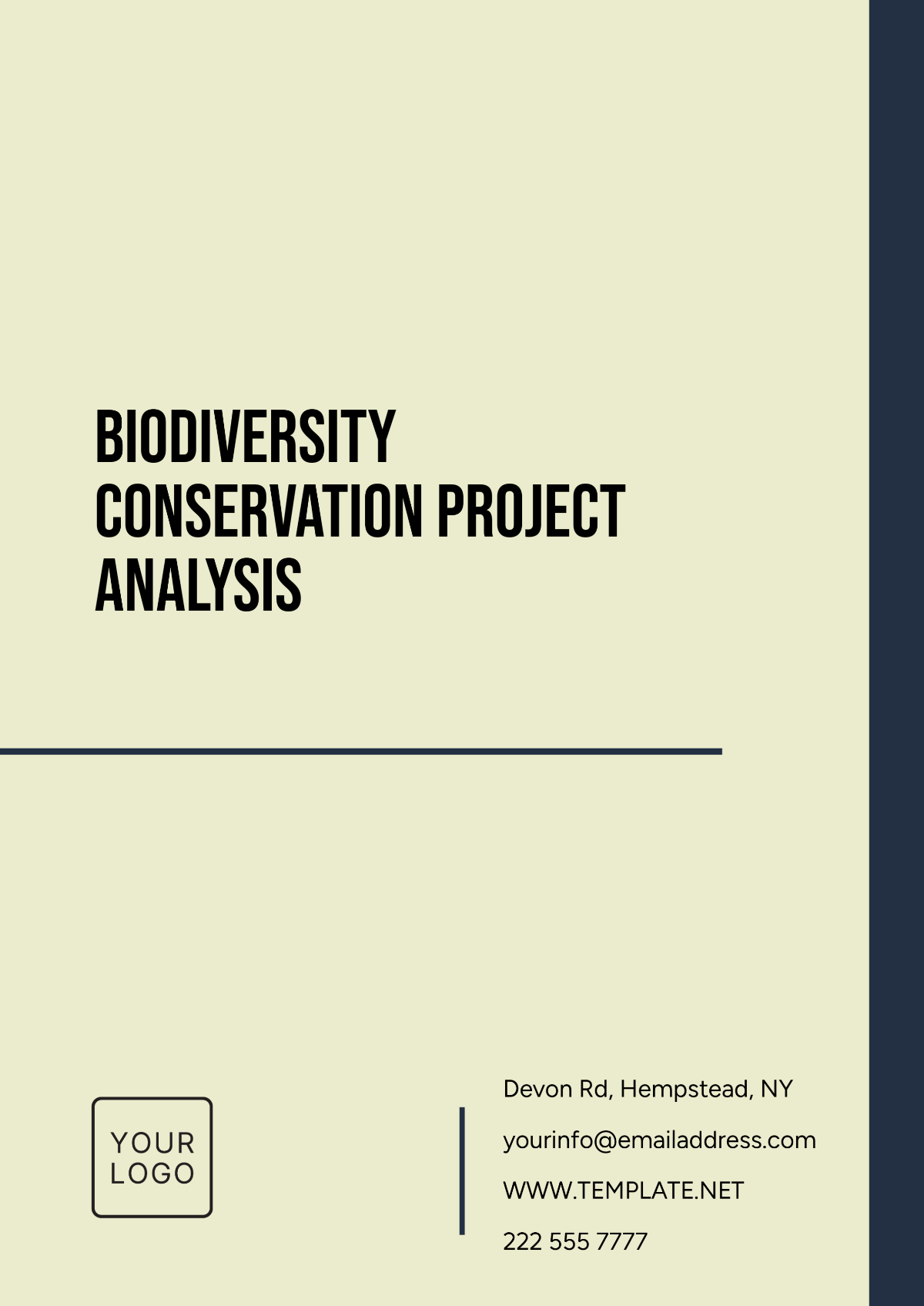BIODIVERSITY CONSERVATION PROJECT ANALYSIS
Prepared By: [Your Name]
Date: [Date]
Biodiversity conservation is critical for maintaining the health, functionality, and sustainability of ecosystems globally. This analysis evaluates the effectiveness and strategic approaches of biodiversity conservation projects, highlighting their significance for ecosystem services, human well-being, and the intrinsic value of all species.
1. Objectives of Biodiversity Conservation Projects
The primary objectives of biodiversity conservation projects focus on preserving and restoring species and ecosystems. Key goals include:
Protected Area Management: Ensuring habitat protection and management for endangered species.
Species Recovery Plans: Developing initiatives to increase populations of threatened and endangered species.
Habitat Restoration: Undertaking ecological restoration of degraded and disrupted ecosystems.
Community Involvement: Engaging local communities in conservation efforts to ensure sustainable outcomes.
Policy Advocacy: Influencing environmental policy and legislation to support conservation goals.
2. Methodologies Employed in the Projects
2.1 Field Research and Data Collection
Field research forms the foundation of biodiversity conservation efforts, employing various data collection techniques to assess current biodiversity status:
Species Inventory: Cataloging species within specific ecosystems.
Habitat Mapping: Creating detailed maps to identify critical habitats.
Environmental Monitoring: Regularly tracking environmental parameters to gauge ecosystem health.
2.2 Community-Based Conservation
Engaging local communities is a strategic approach for sustainable biodiversity management. Key activities include:
Education and Awareness Programs: Increasing community knowledge about local biodiversity.
Local Stewardship: Encouraging governance and stewardship of natural resources by local communities.
Sustainable Practices: Promoting sustainable land-use and resource management practices.
3. Impact Assessment of Conservation Projects
3.1 Ecological Impact
The ecological impact of biodiversity conservation projects is assessed using indicators like species diversity, ecosystem resilience, and habitat integrity. Successful projects report:
Increased species population numbers.
Improvements in habitat quality.
Reduced rates of habitat fragmentation.
3.2 Socio-Economic Impact
Biodiversity conservation projects also contribute to local economies and community well-being by:
Boosting eco-tourism and related industries.
Creating job opportunities in conservation and management.
Enhancing food security through sustainable agriculture and fishing.
4. Challenges and Limitations
Despite their importance, biodiversity conservation projects face significant challenges:
Insufficient funding and limited resources.
Lack of political support and unstable policy environments.
Climate change impacts altering ecosystems unpredictably.
Conflicts between development goals and conservation priorities.
5. Recommendations for Improved Biodiversity Conservation
To enhance the effectiveness and sustainability of biodiversity conservation projects, the following recommendations are proposed:
Recommendation | Details |
|---|---|
Increased Funding | Securing more financial support from governmental and non-governmental organizations. |
Enhanced Policy Support | Advocating for stronger, consistent policy frameworks and international collaboration. |
Climate Adaptation Strategies | Developing adaptive management methods to address climate change impacts. |
Integrated Land-Use Planning | Collaborating across sectors to align conservation with developmental agendas. |
By implementing these measures, biodiversity conservation projects can become more robust and achieve their long-term objectives, safeguarding ecosystems and improving quality of life for future generations.

















































